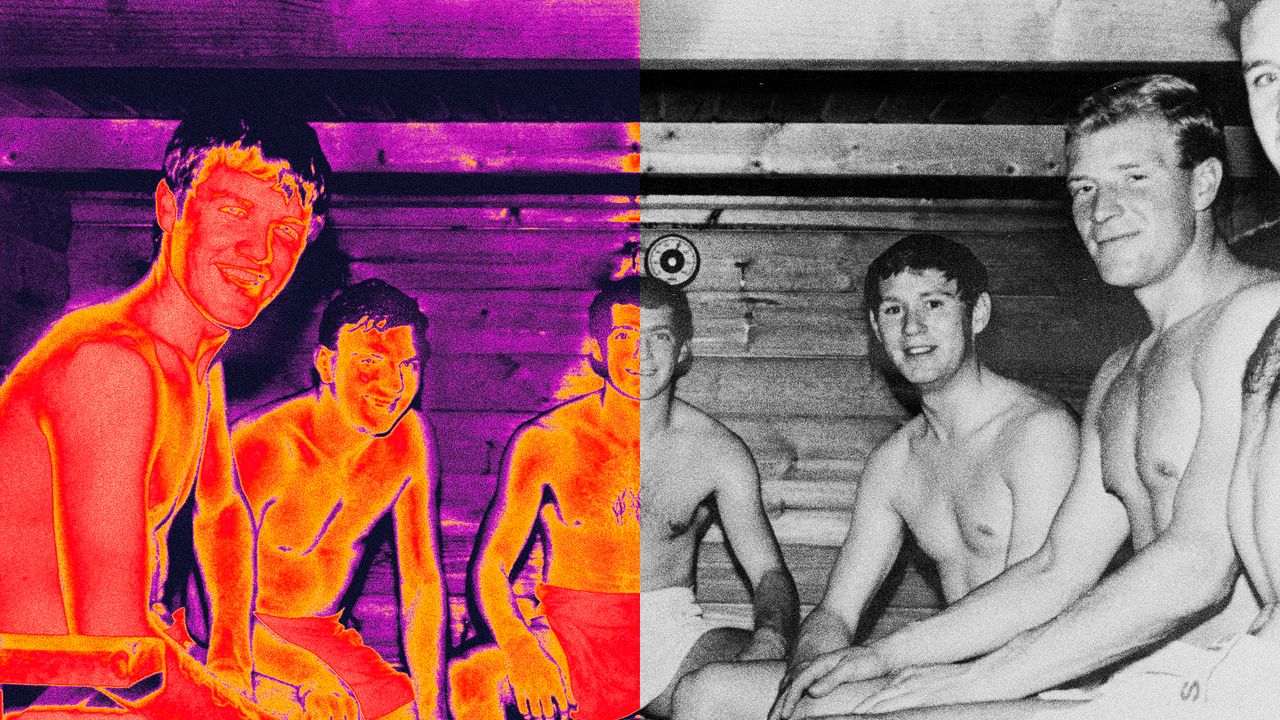Infrared saunas have become incredibly popular, even though they aren’t really saunas at all. To the untrained eye, they basically look the same as what you’d expect a sauna to look like—wood paneling, benches, some guy who just had to bring his phone inside—and both actually share a bunch of the same health benefits. But why does every gym, wellness club, and boutique HIIT workout studio suddenly seem to have these new-wave sweat boxes in their locker rooms? For one, it’s a matter of practicality. Infrared saunas give off way less heat, thus making the surrounding area a much more habitable place for those who’d prefer not to partake. But, more importantly, the wellness industry loves a shiny new thing—especially one that conveniently doesn’t give club members the tools to burn down the building. And, as it turns out, infrared saunas actually have some unique benefits of their own. (For one, they’re less likely to overheat your iPhone, not that we’d know anything about that.)
Infrared vs. traditional sauna: What’s the difference?
Technically, there are several variations of saunas, but they mostly tend to get lumped into two categories: traditional and infrared. A true traditional sauna, also called a Finnish sauna, uses a wood fire to heat stones, which in turn heat the air inside the sauna. Nowadays, you can also find electric saunas (these tend to get filed under “traditional”), which also use stones, but the stones are heated by electricity rather than fire. Traditional saunas can maintain temperatures between 150-220 degrees Fahrenheit. “These typically operate at higher temperatures with dry heat, inducing intense sweating,” says Sam Setareh, MD, MS, director of clinical cardiology at Beverly Hills Cardiovascular.
Unlike traditional saunas, Infrared saunas do not have a central heat source. Instead, they utilize ceramic or metallic panels to emit far-infrared light. “An infrared sauna uses infrared light to directly heat your body, rather than heating the air around you like a traditional sauna,” Dr. Setareh says. Hence, infrared saunas are able to operate at much lower temperatures—between 100–165 degrees—while still giving you a similar, albeit decidedly less intense, sensation to sitting in a traditional sauna.
According to Dr. Setareh, “both types of saunas share common benefits—like improving circulation, promoting relaxation, and encouraging recovery,” and studies have also found both to have positive effects on lowering blood pressure. That said, there are some important differences that may influence which type of sauna is ultimately best for your goals.
Traditional saunas seem to be better for cardiovascular health
Research, including a landmark 2015 Finnish study that surveyed 2,315 men over the course of two decades, has long associated sauna use with heart health and a decreased risk of cardiovascular disease and all-cause mortality. But it wasn’t until a recent study, published earlier this year in the American Journal of Physiology, that researchers have formally begun weighing the benefits of traditional saunas against their infrared counterparts. (This latest study also compared both types of sauna to a hot tub, which surprisingly emerged as the most beneficial of the three when it came to promoting heart health.)
“The bottom line is that the far-infrared sauna, by far, showed the least [noticeable] rise in core body temperature—and therefore had the least cardiovascular impact,” says Christopher T. Minson, PhD, a professor of human physiology at the University of Oregon and the study’s lead author.
First Appeared on
Source link













